Best Places to Visit in New York State
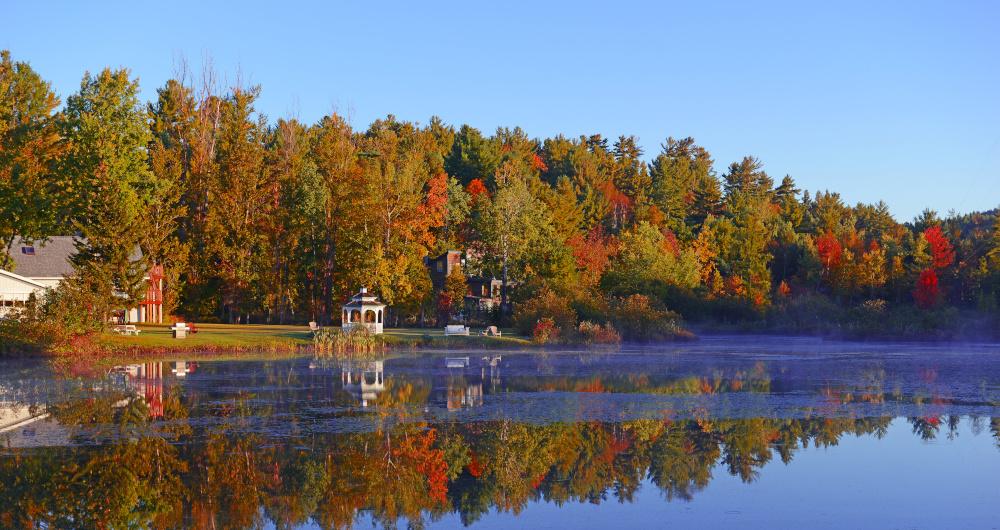
Searching for the best places to visit in New York State? Well, you are in the right place! Here are my absolute favorite places I discovered while living in New York for 10 years. So where do you go when? In most cases, I highlighted my favorite season in each of these destinations, but most importantly these are all places I keep returning to and I hope you will love them as much as we do.
In a hurry? Here's where to go and what to do in 48 hours:
- Head to the beach on Fire Island, Greenport and Cutchogue
- Visit big city destinations: Rochester, Syracuse, Brooklyn, Manhattan
- Tour NY wine country: Finger Lakes, Niagara Falls
- Spend a weekend in the Adirondacks: Lake George, Plattsburgh
- Visit Hudson Valley towns: Saugerties, White Plains, Albany, Poughkeepsie
- Where to go in the Thousand Islands region: Watertown
- Places to visit in The Catskills: Cooperstown, Narrowsburg, Jefferson
- Other unique places to visit in NY: Vestal, Saratoga Springs
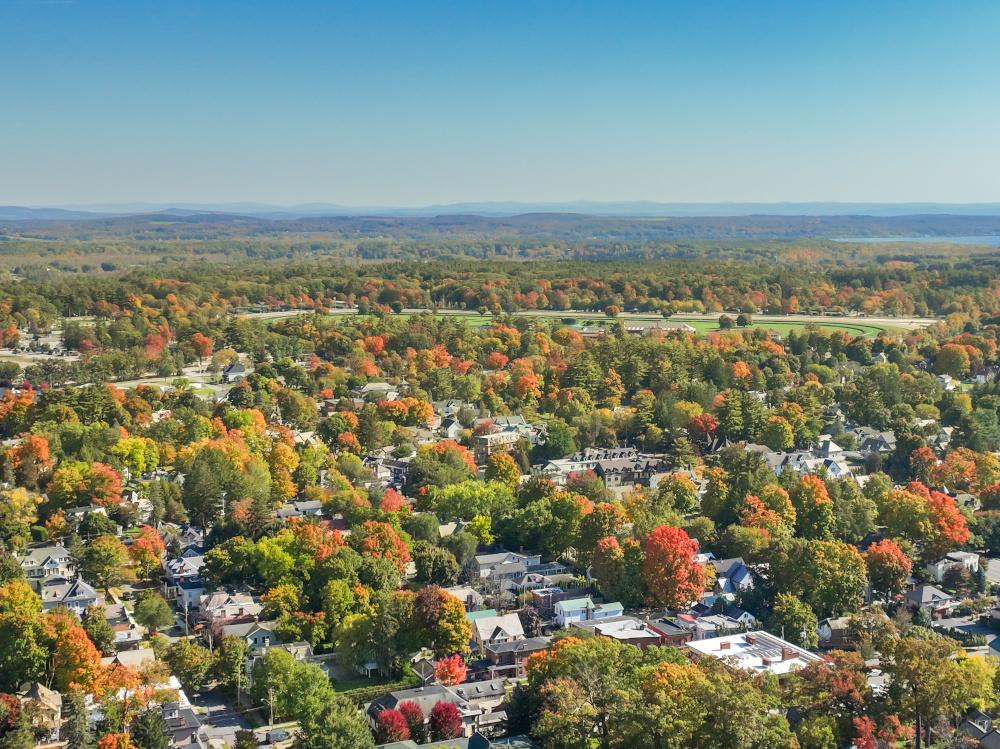
1. Saratoga Springs
This was my ultimate summer retreat and absolute best place to visit over a long summer weekend with my husband when I moved to New York. Why? For me, the town has great energy, from the opening weeks of the world-famous Saratoga Race Course season to lively outdoor concerts in Saratoga Spa State Park ($10 per car).
I thought that the Saratoga Farmers’ Market is not to be missed here because one of those places that instantly makes you feel connected to the community, in addition to offering amazing seasonal events and cheap eats!
We drove 3 hours 30 minutes from our apartment in NYC, checked into the elegant 4-star Adelphi Hotel (around $464/night, Michelin Key award winner), and spent three indulgent days soaking in mineral springs at the historic Roosevelt Baths & Spa ($65 for 40 minutes), strolling along Broadway’s boutique-lined streets, hiking on peaceful trails around Geyser Creek, and eating great hearty American fare at Olde Bryan Inn.
In addition, my evenings in Saratoga were filled with culture, thanks to performances by the New York City Ballet and the Philadelphia Orchestra at the iconic Saratoga Performing Arts Center.
- Location: Eastern New York State, north of Albany in the foothills of the Adirondack Mountains
- Map & Directions
- Elevation: 305 feet (93 meters) above sea level.
What I loved best:
For dinner, my highlight was 15 Church, where the scallops ($36) were unforgettable, fresh, delicate, and beautifully plated.
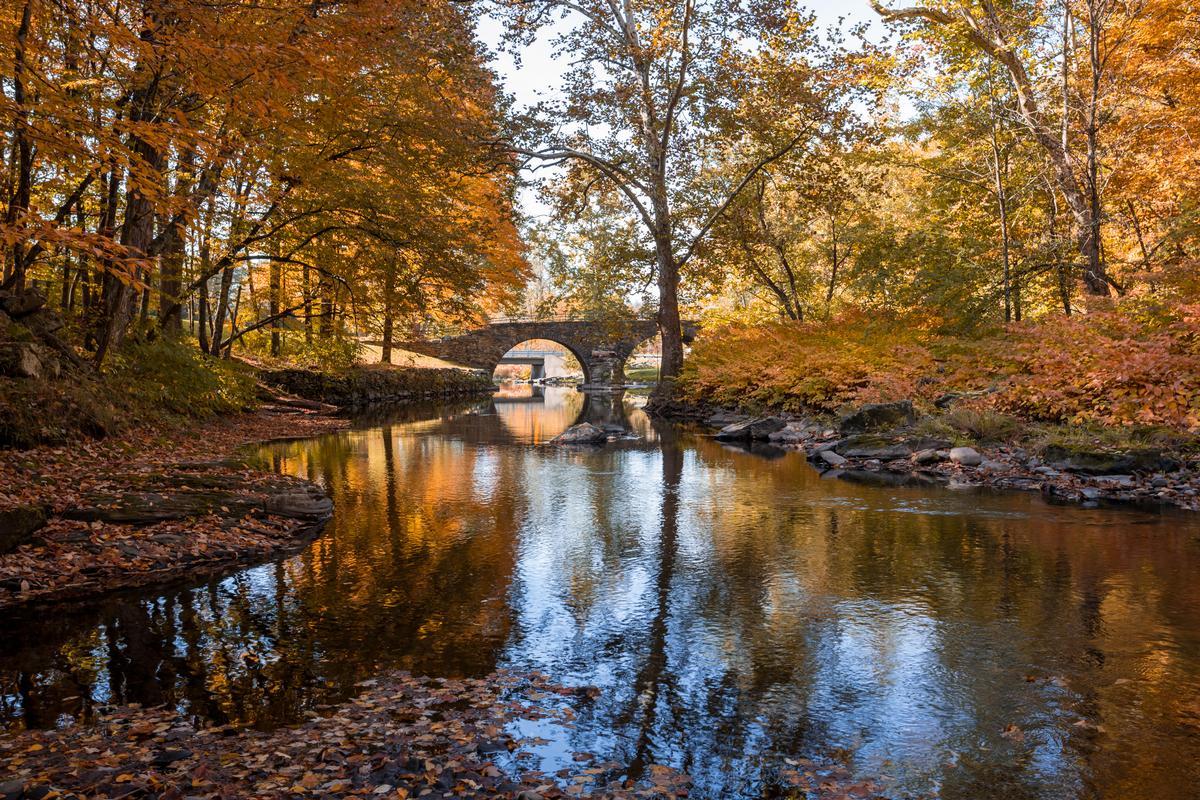
2. Best Things to Do in The Catskills, NY
This region, tucked between forested peaks and charming hamlets, is one of my favorite weekend getaways from n New York City when I want a mix of nature, culture, and cozy comfort.
We drove up from our apartment in Manhattan (just about two hours) and I based myself at the 4-star Hotel Mountain Brook (around $169) where our Superior Main Lodge Room for five days had such a cozy, romantic cabin-like feel with warm woods, and a comfortable sofa in front of the romantic fireplace.
I loved that in the morning, it was just a short drive 7-minute to Kaaterskill Falls (two and a half hours round trip hike), one of New York’s most spectacular waterfalls!
Next day we drove just over an hour to Hanford Mills Museum in East Meredith, a must-visit attraction, one of those hidden gems that feels like stepping straight into a living time capsule. It's actually still a fully operational 19th-century mill!
Afterwards, we drove 1.5 hours south to The Forestburgh Playhouse a must visit stop in The Catskills, where you can choose from Musicals, Plays, Cabaret, Broadway Concerts, and Theatre for Young Audiences! We spent a cozy night at 4-star Inn at Lake Joseph, just 4 minutes from The Forestburgh Playhouse.
- Location: Southeastern New York State, roughly 100 miles north of NYC, west of the Hudson River
- Map & Directions
- Elevation: 3,500 feet (1,067 meters) above sea level.
What I loved best:
On our second trip to The Catskills (this time during the fall foliage season) we had the most amazing dinner at Peekamoose Restaurant, my personal highlight, a true farm-to-table Catskills experience! We spent two blissful days at the 5-star Urban Cowboy Lodge (around $247/night) just an 8-minute drive from Peekamoose Restaurant.
If you loved these ideas, check out Narrowsburg and Cooperstown as well!

3. Lake George
I thought this lake town was without a doubt one of the best places to visit on a relaxing family vacation in New York State.
A scenic 30-minute drive north from Saratoga Springs brought us to the heart of the village, which had that classic resort-town energy. We spent the afternoon browsing souvenir shops along Canada Street, followed by a hearty lakeside meal at The Lagoon. In the afternoon, Chris and I visited Shepard Park’s waterfront, and then stayed four nights in a beautiful lake view room at the 4-star Lodges at Cresthaven (around $185/night).
- Location: Northeastern New York State, in the southern Adirondack Mountains, between Albany and the Vermont border
- Map & Directions
- Elevation: 320 feet (98 meters) above sea level.
What I loved best:
Dinner at Lakeside Restaurant was my personal highlight — the Adirondack trout ($32) was fresh and perfectly prepared, enjoyed with a view of the water as the sun set.
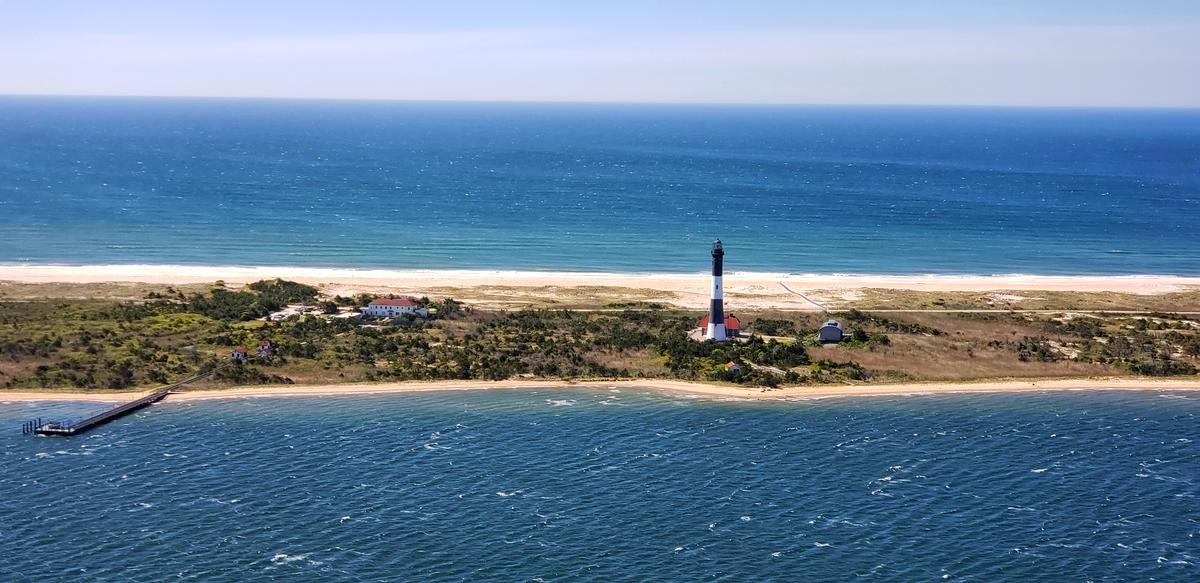
4. Fire Island, NY
Ready for a history-rich mountain escape? The Catskills are a real standout! The first time we visited this coastal gem was in springtime two decades ago, with wildflowers on top of some dunes, and very few visitors even though it was a weekend.
We drove from our apartment in New York City to Bay Shore, then hopped on the quick ferry ride across the Great South Bay where we checked into a vacation rental on Fire Island where I strolled through the Sunken Forest, visited Fire Island Lighthouse, and relaxed on Fire Island beaches.
- Location: Off the southern coast of Long Island, New York, between the Atlantic Ocean and the Great South Bay
- Map & Directions
- Elevation: 3 feet (1 meter) above sea level.
What I loved best:
Dinner at Matthew’s Seafood House was a standout, with just-caught fish and a casual harbor view that felt quintessentially coastal. In addition, ending the day watching pastel sunsets over the Great South Bay was my personal highlight.

5. Plattsburgh, NY
This is one of my favorite small cities in upstate New York. Why? While it’s a smaller city, I found this place incredibly charming, with a mix of a lively waterfront, and that relaxed Adirondack vibe.
I think it's one of the best places to visit in New York State. Why? First off, it’s right on the shores of shimmering Lake Champlain. In addition, it's framed by the rolling Adirondack Mountains to the west and with Vermont’s Green Mountains rising across the water!
My husband, my son and I drove about 2.5 hours north from Albany to reach it, and once there the easygoing, family-friendly feel made me want to stay. We spent two fun days at 3-star Best Western Plus Plattsburgh exploring the Plattsburgh City Beach (one of the largest freshwater beaches in the U.S.), checking out the War of 1812 Museum (freeP, and strolling through downtown shops.
- Location: Northeastern New York State, on the western shore of Lake Champlain near the Vermont border
- Map & Directions
- Elevation: 180 feet (55 meters) above sea level.
What I loved best:
My personal highlight were the peaceful lakeside trails at Point au Roche State Park (free).
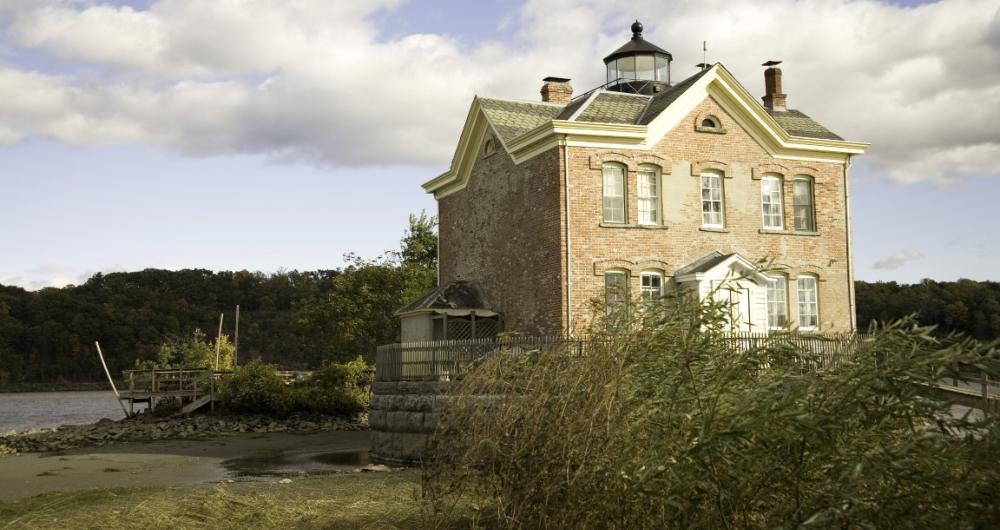
6. Saugerties, NY
Ready for a history-rich Hudson Valley getaway? For me, Saugerties is a real standout! So what is there to do here on a 48 hour weekend visit? Above all, I admired the 19th-century brick storefronts, and scenic views of both the Hudson River and Catskill Mountains.
An easy 20-minute drive north from Woodstock brought us to the heart of historic downtown where we spent the afternoon browsing the shops along Partition Street, enjoying a cozy farm-to-table meal at Miss Lucy’s Kitchen (my son went for the tacos), and then staying for the 48 hour weekend at the beautifully situated 4-star Diamond Mills Hotel (around $316/night), located right above the Esopus Creek Falls.
- Location: Eastern New York State, in the Hudson Valley between Kingston and Catskill
- Map & Directions
- Elevation: 220 feet (67 meters) above sea level.
What I loved best:
Walking along the short nature trail out to the historic 1869 Saugerties Lighthouse was my personal highlight! (keep in mind that you have to check the tide schedule before you go)
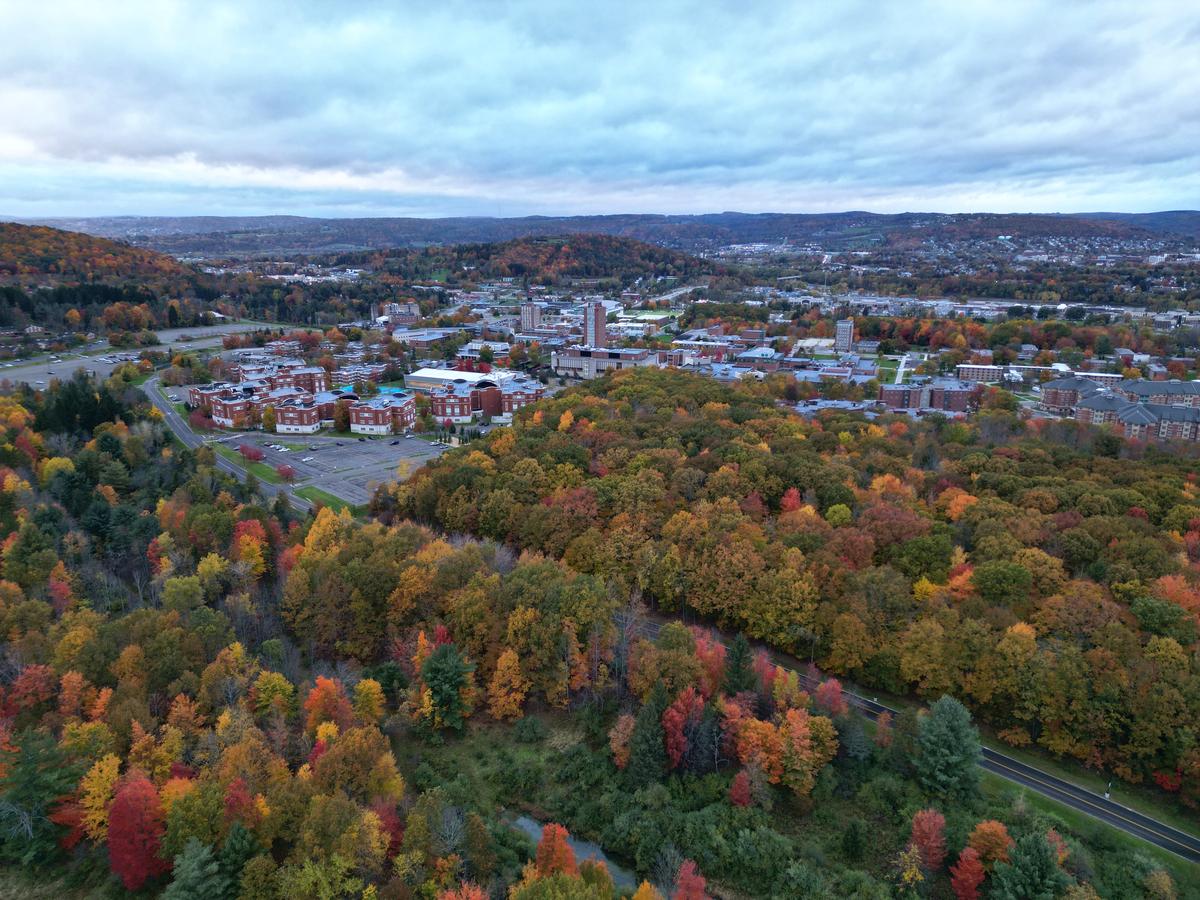
7. Vestal, NY
I found this welcoming town a quick 10-minute drive west from Binghamton. I was instantly charmed that Vestal, NY felt lively yet laid-back with a balance of modern shopping centers and small-town vibe.
I spent 90 minutes in the afternoon browsing for treasures at the locally loved Vestal Farmers Market, walking along peaceful trails at the Vestal Rail Trail, and then we stayed overnight at a Residence Inn by Marriott.
- Location: South-central New York State, just west of Binghamton near the Pennsylvania border in the Susquehanna River Valley
- Map & Directions
- Elevation: 876 feet (267 meters) above sea level.
What I loved best:
Enjoying a casual bite at The Vestal Bakery was my personal highlight where the selection of treats was irresistible!
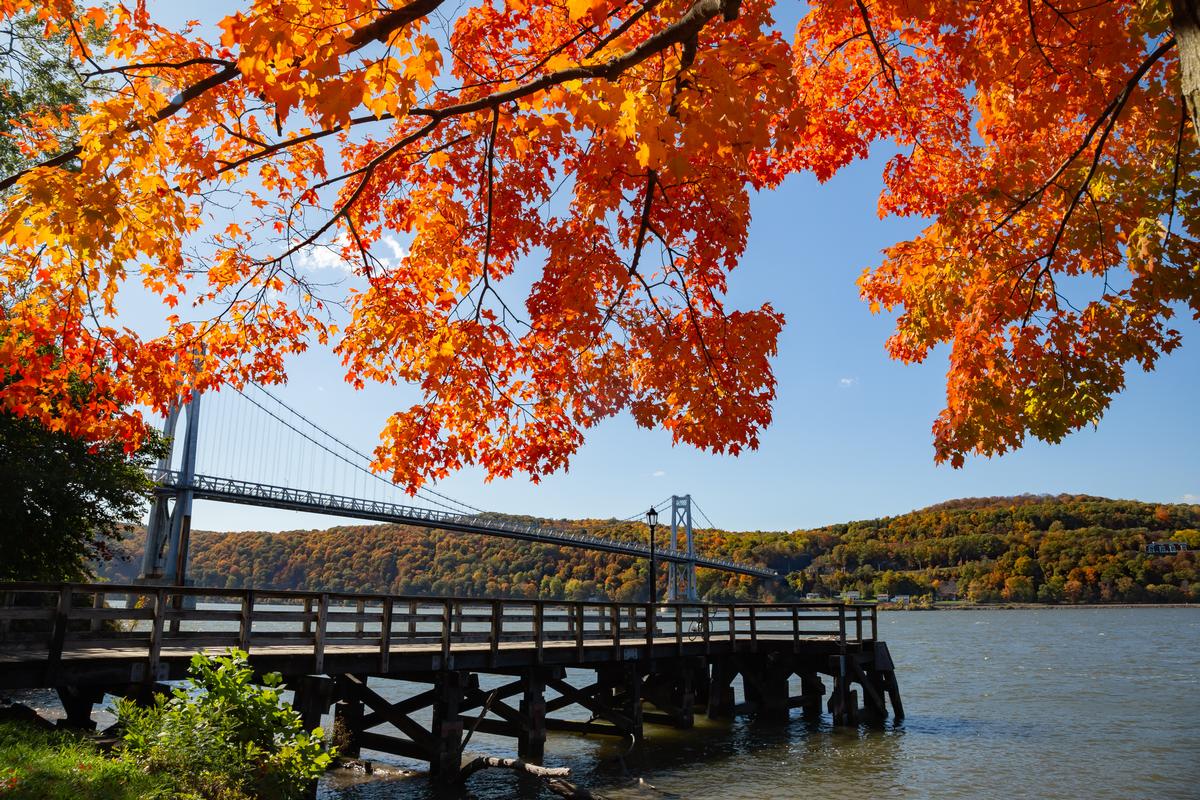
8. Poughkeepsie
This city, tucked between rolling valley hills and the Hudson’s shimmering shoreline, is one of my favorite places to visit when I want a mix of culture, food, and outdoor adventure.
After taking the 1.5 hour scenic train ride up from New York City, I spent a cozy five days at charming Homewood Suites by Hilton Poughkeepsie (around $112/night), and watching the fog lift each morning. Days in "The Queen City of the Hudson" were filled with strolls across the iconic Walkway Over the Hudson, exploring the historic Vassar College campus, and sampling artisanal treats at the Poughkeepsie Waterfront Market.
- Location: Eastern New York State, in the Hudson Valley midway between New York City and Albany, on the east bank of the Hudson River
- Map & Directions
- Elevation: 180 feet (55 meters) above sea level.
What I loved best:
Peaceful walks along the riverfront in the evening was my favorite highlight, followed by dinner at Cosimo's Trattoria & Bar, a Tuscan-Italian restaurant where we had amazing wood-fired pizza!
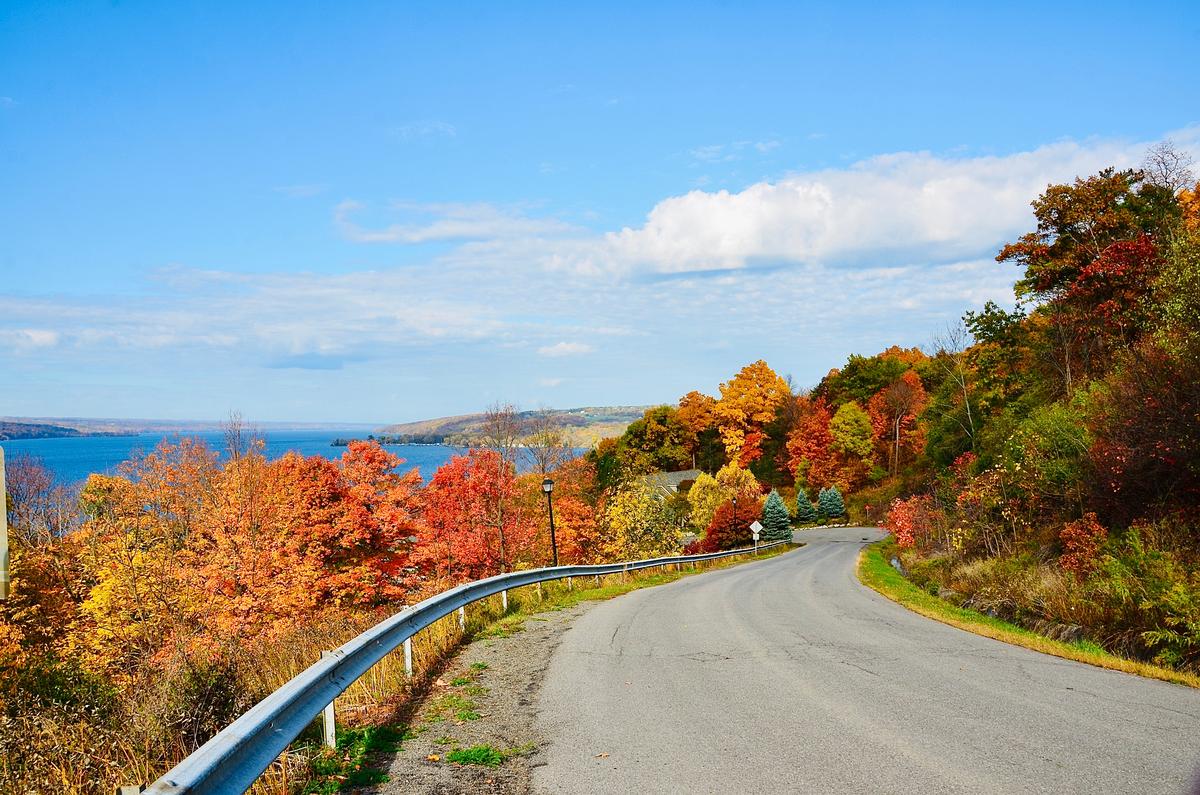
9. Finger Lakes
Tucked between rolling hills and a shimmering lake, this area is one of my favorites when I want a mix of wineries, farm-to-table food, and outdoor adventure. In addition, I think these lakes are absolutely breathtaking with their deep, blue water, vineyards, and romantic sunsets over the water.
A friend told me about Sonnenberg Gardens & Mansion State Historic Park ($16 Adult admission, open from May 1st to October 31st) and it truly was the ultimate hidden gem in the Finger Lakes region when I visited this August.
To get here, I took a scenic 40-minute drive south from Rochester to Canandaigua, and I spent the afternoon browsing local boutiques on Main Street, walking along the pier on Canandaigua Lake, and then staying two wonderful nights at the 4-star Belhurst Castle (from $195/night), a lovely New York wine county hotel overlooking Seneca Lake.
- Location: West-central Upstate New York, spanning a region south of Lake Ontario
- Map & Directions
- Elevation: 1,000 feet (305 meters) above sea level.
What I loved best:
Dinner at Stonecat Café was my personal highlight: the pan-seared duck ($34) with local vegetables was unforgettable, paired with a crisp glass of Finger Lakes white.
A downside? Belhurst Castle is such a romantic, magical place, but I found that accommodations and winery tastings were a little pricier than in smaller upstate towns.
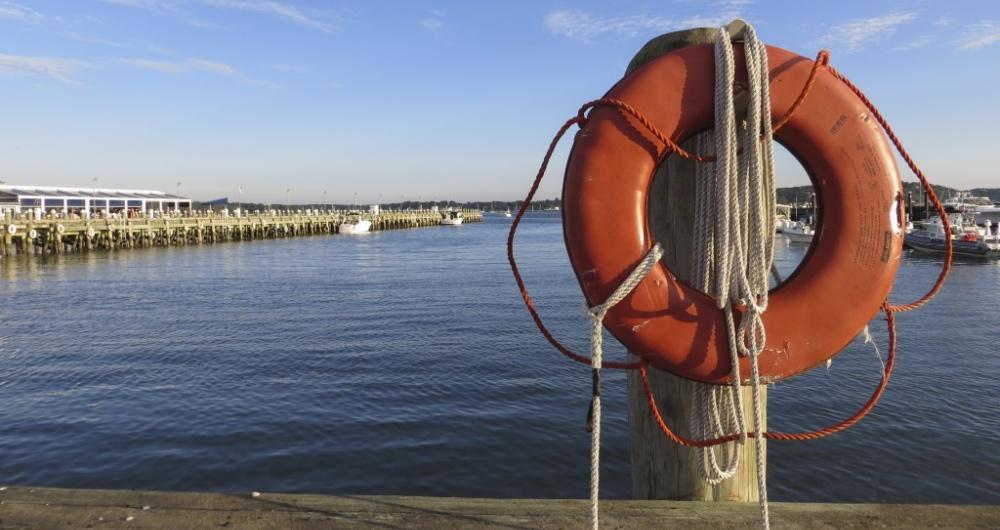
10. Greenport, NY
Ready for a history-rich harbor town? Greenport is a real standout. This is a coastal village on the North Fork of Long Island, about 2 hours from my apartment in NYC. I thought this place was wonderfully charming with its historic fishing village wharf, brightly painted storefronts, and sailboatson Peconic Bay.
I spent the afternoon browsing unique shops along Front Street, enjoying a fresh seafood meal at Claudio’s, taking in harbor views from Mitchell Park (with its antique carousel), and then staying relaxing blissful nights in a Partial Harbor View Balcony King room at the waterfront Harbor Front Inn (around $206/night).
- Location: Eastern Long Island, New York, at the end of the North Fork on the shores of the Peconic Bay
- Map & Directions
- Elevation: 10 feet (3 meters) above sea level.
What I loved best:
Dinner at Claudio’s was unforgettable — the lobster roll ($38) was overflowing and perfectly seasoned, and eating it just steps from the dock made the experience quintessentially Greenport.

11. Niagara Falls
Featured in many movies and travel shows, this awe-inspiring destination needs no introduction. For me, I loved watching the thundering waterfalls for hours, and took lots of photos of constant rainbows.
A scenic 25-minute drive north from Buffalo brought us here and I spent the afternoon marveling at the American Falls from Prospect Point, boarding the Maid of the Mist boat for an unforgettable 2- hour ride, visiting the Cave of the Winds boardwalk beneath Bridal Veil Falls, and then staying two thrilling nights at the Seneca Niagara Resort & Casino, conveniently located near it all.
- Location: Western New York State, along the Niagara River at the U.S.–Canada border, just north of Buffalo
- Map & Directions
- Elevation: 614 feet (187 meters) above sea level.
What I loved best:
I loved stopping at different overlooks and catching rainbows over Niagara Falls like in my picture.

12. Syracuse
Set in the heart of Central New York, Syracuse feels like one of the most underrated city escapes in the Northeast, and I think it’s one of the best blends of urban culture and outdoor access.
Ever since my college days, I've enjoyed visiting this city full of character with its historic red-brick architecture, lively university atmosphere (I went to college here), and lovely tree-lined neighborhoods. A 2 hour 15 minute drive from Albany brought me to the heart of downtown Syracuse with its mix of cultural landmarks and restaurant.
I spent the afternoon browsing unique shops in Armory Square, enjoying a hearty meal at Dinosaur Bar-B-Que, taking in the impressive collection at the Everson Museum of Art, and then staying two relaxing nights at the historic 4-star Marriott Syracuse Downtown.
- Location: Central New York State, east of Lake Ontario and at the crossroads of Interstates 81 and 90
- Map & Directions
- Elevation: 380 feet (116 meters) above sea level.
What I loved best:
Dinner at Pasta’s on the Green was my personal highlight — the chicken riggies ($24), a regional favorite, were rich, spicy, and it was a meal that felt uniquely Syracuse.
A downside? Visiting in the winter is difficult because heavy snowstorms often shut down transportation.
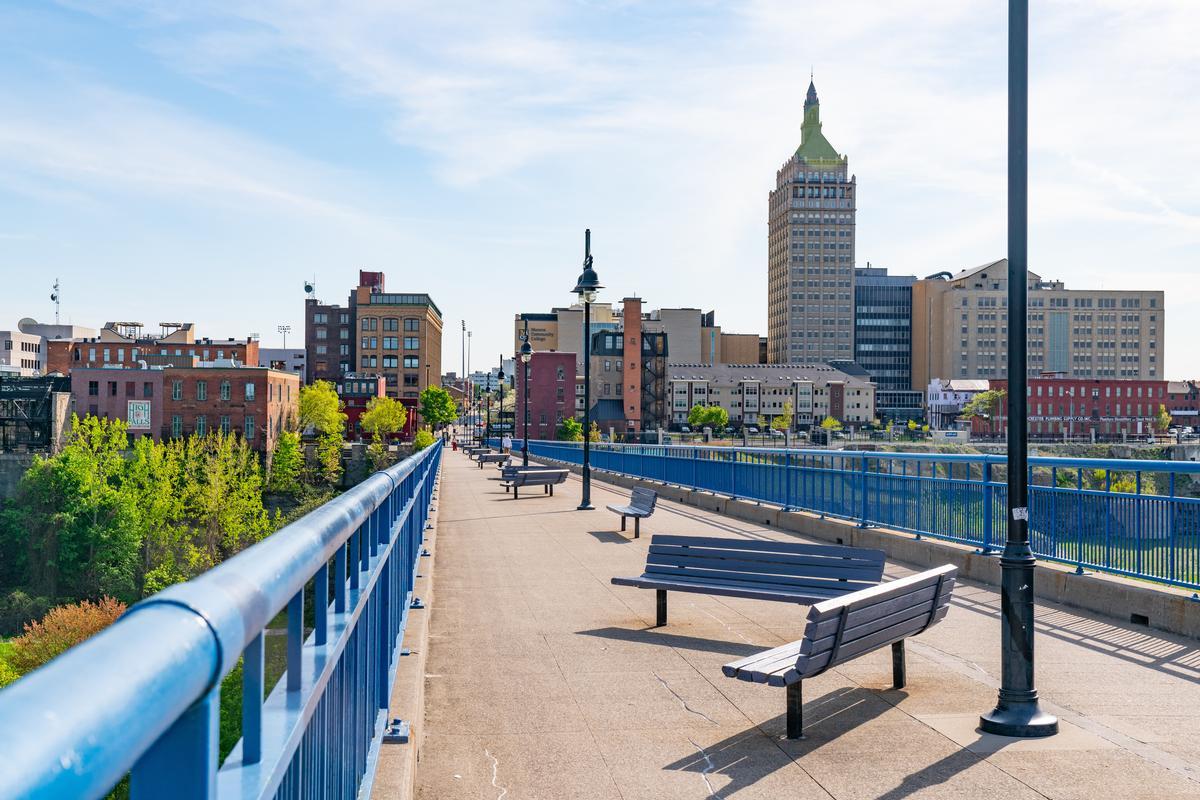
13. Things to Do in Rochester
Stretching along the southern shore of Lake Ontario, this city feels like one of the most underrated and unspoiled gems in New York State, and I think it’s one of the best places to experience a mix of nature and culture without crowds.
My first visit was decades ago when I visited the University of Rochester while going school nearby. Located on the southern shore of Lake Ontario, between Buffalo and Syracuse, Rochester’s often underrated compared to bigger cities, but I think that makes it one of New York State’s best hidden gems.
I learned that this city of roughly 210,000 is known as the birthplace of Eastman Kodak, Xerox, and Bausch & Lomb while we stayed at 3-star Hampton Inn & Suites Rochester for two days.
So what did we see on our 48 hour weekend getaway? Personally, I loved exploring the Strong National Museum of Play with my son, where hours passed in a blink and I was happy my kid learned a lot. If you’re into art, the Memorial Art Gallery is the coolest, with collections spanning centuries. For something outdoorsy, the Rochester's Highland Park and Durand Eastman Park have gardens and lake views (yes, they are lovely even in the winter but be sure to bundle up!).
- Location: Western New York State, on the southern shore of Lake Ontario between Buffalo and Syracuse
- Map & Directions
- Elevation: 505 feet (154 meters) above sea level.
What I loved best:
In summer, I think the Rochester Lilac Festival is one of the coolest events here!

14. Narrowsburg
Perched above a dramatic bend in the Upper Delaware River, this tiny hamlet feels like one of the most unspoiled corners of New York I’ve visited, and I think it’s one of the best small-town getaways within a few hours of the city.
4 hours from our previous stop in Rochester, Narrowsburg dates back to the early 19th century, and today has a population of just under 500 — small, but full of character!
I loved exploring the Delaware River (I even spotted a few bald eagles!), wandering around Main Street with its cute shops and bakeries, checking out the Delaware Valley Arts Alliance, and enjoying dinner with a view at The Heron, one of the town’s farm-to-table gems.
- Location: Southwestern New York State, in the Upper Delaware River Valley near the Pennsylvania border
- Map & Directions
- Elevation: 974 feet (297 meters) above sea level.
What I loved best:
I loved visiting in early November when the crowds had thinned and the last of the autumn color clung to the hills.

15. Cooperstown and Fly Creek Cider Mill
Just an hour and 30 minutes from Albany, I found one of the most perfect day trips from New York - this is a pretty hamlet that captures the essence of rural charm and autumn nostalgia.
A short scenic drive from Cooperstown brought me into the heart of Fly Creek, where the sound of rushing water from Fly Creek itself mingled with the scent of fresh apples and warm cider doughnuts. The undisputed highlight here is the Fly Creek Cider Mill & Orchard, a beloved family-run landmark that has been pressing cider for over 160 years, and I spent a delightful afternoon exploring the cider mill sampling sweet and hard ciders, and browsing the country store packed with local jams, cheeses, and baked goods.
Nearby Cooperstown, NY offers attractions like the National Baseball Hall of Fame and Museum, outdoor activities at Otsego Lake and Glimmerglass State Park, and cultural sites such as the Fenimore Art Museum and Hyde Hall.
- Location: Central New York State, on the southern tip of Otsego Lake, northeast of Oneonta in the Leatherstocking Region
- Map & Directions
- Elevation: 1,191 feet (363 meters) above sea level.
What I loved best:
Watching the traditional cider-making process!
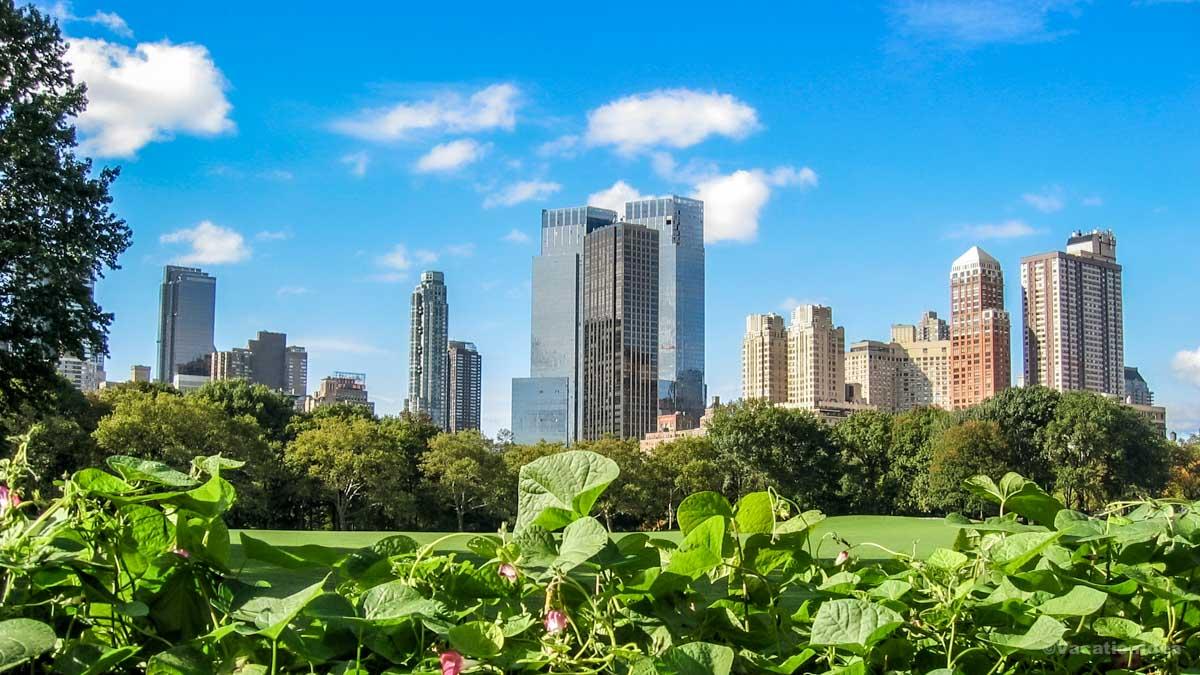
16. Things to do in Manhattan, NYC
This place needs no introduction and you simply must add it to your best places to visit in New York State bucket, because after all, it's an exceptional mix of culture, food, art, and energy, where every block feels alive. Chris and I lived in Manhattan for 10 years and on my visit last month we revisited our favorite spots with our teenage son.
I checked into the stylish 4-star Moxy NYC Chelsea, and over five unforgettable days, we wandered the High Line’s urban gardens, browsed Chelsea Market’s gourmet stalls, and recharged with an espresso at Kobrick Coffee in the West Village, a century-old roaster that feels like stepping into old New York. For first-time visitors, I always recommend pairing the High Line + Chelsea Market as a three-hour morning combo, and even if you’re not much of a walker, you can just head straight for the food!
Taking the ferry out to The Honorable William Wall, the floating clubhouse of the Manhattan Yacht Club near Ellis Island, felt like one of the coolest escapes I’ve ever had in the city—half the fun was just getting there. Another favorite water adventure is hopping on a New York Media Boat speedboat tour from Pier 25 in Tribeca, one of the most thrilling ways to see Manhattan’s skyline up close.
Even as a local, I love rediscovering the city’s classics and when I booked a Circle Line Cruise around Manhattan in June, it felt like seeing New York from an entirely new perspective. Of course, no visit to Manhattan is complete without Central Park, my go-to spot for outdoor fun, and after wandering its winding paths, Marea on Central Park South on Central Park South is a must for a refined seafood meal, or for something casual, grab lunch at Whole Foods in The Shops at Columbus Circle on the park’s southwest corner.
Evenings in Manhattan are pure magic, whether catching a Broadway show or soaking in the neon spectacle of Times Square, I always make time for Birdland Jazz Club on West 44th Street, one of the city’s most iconic jazz venues where dinner and live music meet perfectly. For something a bit more romantic, Elsie Rooftop above Midtown makes for an effortlessly fashionable date spot...just remember to reserve your table, especially on weekends (we made this mistake once)!
Afterwards, if you are in the mood for a bit of shopping and want something unique to take home with you, Creel and Gow on East 70th Street is the place to pick up one-of-a-kind treasures and gifts, and when I’m in the mood to “eat my way” through the city, Ahoy New York Food Tours captures everything I love about Manhattan—its flavor, its history, and its infectious energy.
- Location: Southeastern New York State, on Manhattan Island at the mouth of the Hudson River
- Map & Directions
- Elevation: 33 feet (10 meters) above sea level.
Just north of Manhattan (separated from Manhattan by the Harlem River) Bronx Historical Tours offer a fascinating glimpse into local heritage.
What I loved best:
Celebrating OktoberFest NYC on the waterfront was super fun...okay, maybe it was a bit of a tourist trap (there were plenty of locals too!), but they’re nailing the vibe they are after. Hosted at places like Pier 15 in the Seaport District, OktoberFest NYC brings in the festive spirit of a traditional Bavarian beer garden right in the heart of the city.

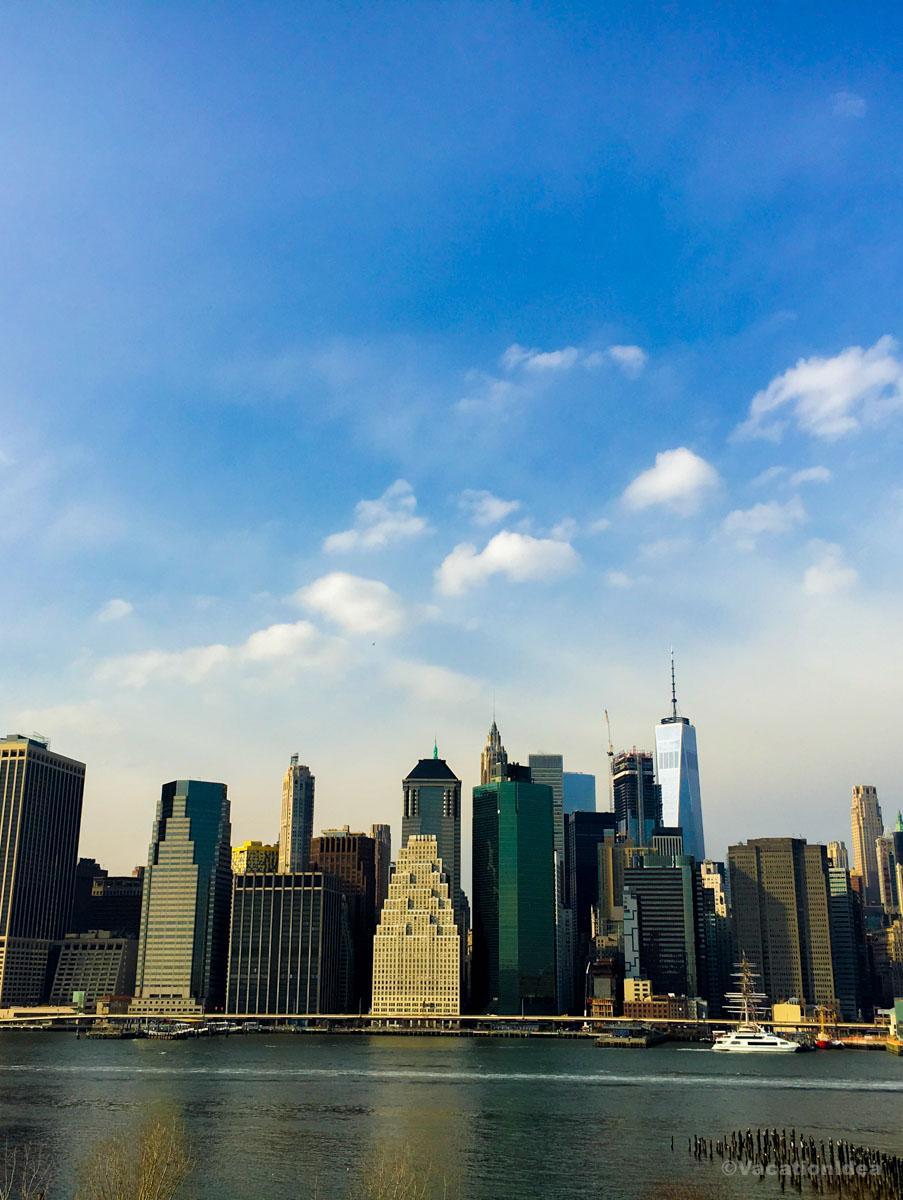
17. Things to Do in Brooklyn
Ready for a history-rich city experience? Brooklyn is a real standout. No visit to NYC is complete without a stop my sister-in-law lives, the ultimate creative escape and one of the most unexpectedly soulful places you can explore just across the bridge from Manhattan.
Check prices at 1 Hotel Brooklyn Bridge where I stayed for two days on one of my trips back visiting family, which won the AAA Four Diamond award so you can trust that it's a quality place.
For something totally unique and unexpected just across the bridge in Brooklyn, check out Farm.One in Prospect Heights, Brooklyn. You can book a tour at 625 Bergen Street in Brooklyn, New York where you get to taste what they grow, or check out one of their special events.
When I think of Brooklyn, one of my favorite places to spend a sunny day with kids is Luna Park at Coney Island, just a quick subway ride from Manhattan and the moment I step off with my son near Stillwell Avenue, we feel like we’ve walked into a joyful world filled with colorful rides, boardwalk snacks, and ocean breezes that completely win me over.
On weekends, I love heading to the Brooklyn Flea, which is usually set up near DUMBO and sometimes at Atlantic Terminal because the moment I arrive at Brooklyn Flea, I feel like I’ve stepped into a treasure hunt, with rows of vendors selling everything from vintage clothes to handmade crafts.
Over in Williamsburg, Café Mogador on Wythe Avenue became one of my go-to neighborhood spots, with its inviting décor, Moroccan-inspired menu, and easygoing atmosphere just steps from the waterfront.
And near Brooklyn Heights, stepping into the Brooklyn Historical Society (now part of the Center for Brooklyn History) felt like uncovering a hidden gem because its stately wood-paneled library and exhibits make it a place you’ll want to linger in for hours.
Creative energy thrives everywhere here with FAD Market in Brooklyn makes you feel like you’ve stepped into one of the coolest creative hubs in the city, usually popping up in places like Boerum Hill or Downtown Brooklyn - the market brings together an inspiring mix of fashion, art, and design from local makers.
Tucked in Carroll Gardens, Emma's Torch is another special find, a true hidden gem that doubles as a training ground for refugees building new lives through culinary careers and when we sat down in the warm, welcoming space, I loved knowing that every dish we enjoyed wasn’t only delicious but also part of a bigger mission that supports the community.
Afterwards, BRIC Arts Media in Downtown Brooklyn easily felt like one of the coolest creative spaces in the borough...located right by the Brooklyn Cultural District, it’s a hub where art, music, and storytelling all come together under one roof.
Moored under the Brooklyn Bridge at Fulton Ferry Landing, Bargemusic (a floating chamber music venue) offered not just world-class performances but also unforgettable views of the Manhattan skyline shimmering across the East River.
Pizza Loves Emily in Brooklyn is cozy, lively, and like a perfect slice of New York itself — casual but unforgettable and I stumbled upon some great dining deals here after the holidays, when the city feels a bit calmer but just as full of flavor.
- Location: Southeastern New York State, on western Long Island, directly across the East River from Manhattan
- Map & Directions
- Elevation: 59 feet (18 meters) above sea level.
What I loved best:
Last but not least, attending the Brooklyn Film Festival in early summer was one of my most exciting cultural experiences in the borough.
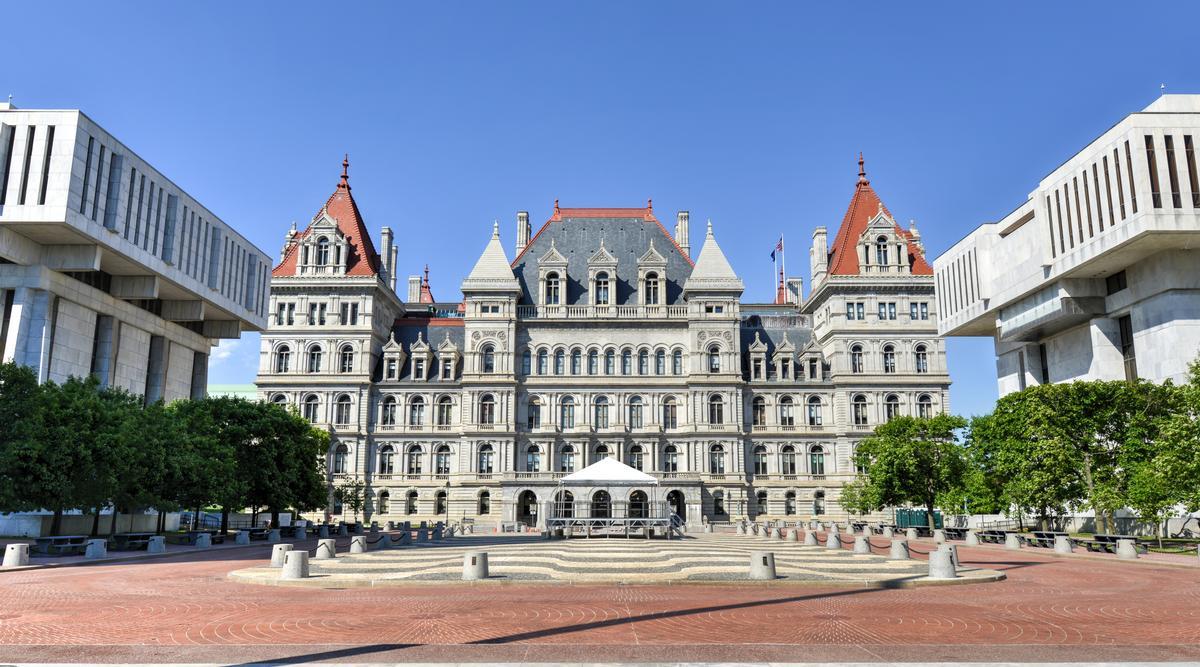
18. Things to Do in Albany
I think it’s one of the most interesting places I've visited in upstate New York. Why? When I first moved to New York, I came to explore the impressive Empire State Plaza I had seen in the photos. In addition, I ended up discovering an amazing capital city that blends old-world charm with a fresh, modern energy.
We stayed at the 3-star Hampton Inn & Suites Albany-Downtown for two nights, which turned out to be a perfect base for exploring the area.
What and how much can you really see in one weekend? Quite a lot, it turns out -one of my favorite stops was the New York State Museum, a fascinating place where we learned lots about the region’s history and culture. I was impressed by the Albany Institute of History & Art, one of the oldest museums in the U.S.
For outdoor time in Albany, Washington Park was our go-to spot where we enjoyed a sunny weekend picnic.
- Location: Eastern New York State, on the west bank of the Hudson River
- Map & Directions
- Elevation: 187 feet (57 meters) above sea level.
What I loved best:
If you are in the mood for hearty NY-style pizza or classic Italian comfort food lunch or dinner (who isn't?!), we love Paesan’s Pizza & Restaurant.
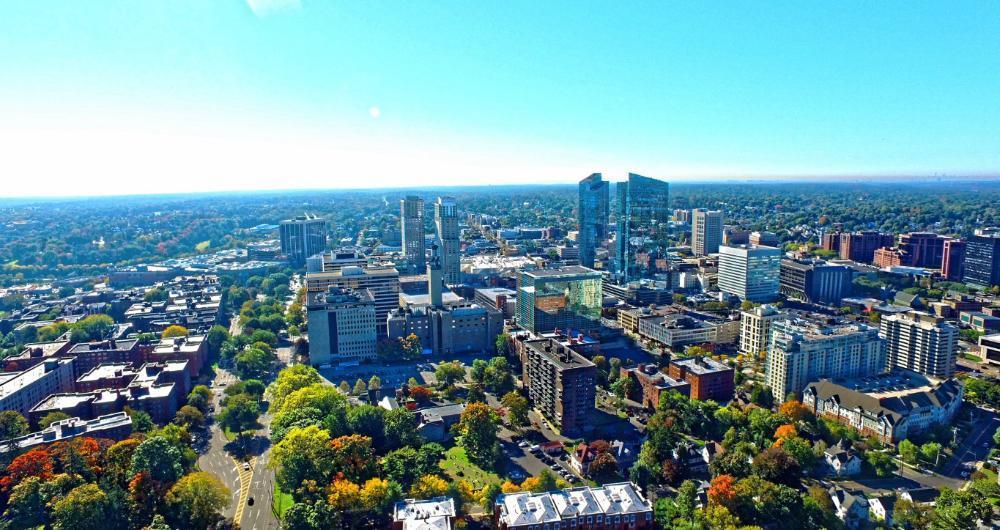
19. White Plains in 48 Hours
As a New York City local, I think this is one of the best gateways to the Hudson Valley. Why? It's super convenient, with a Metro-North stop that makes a trip here cheap and fast.
From Manhattan, it was about a 40-minute drive north to White Plains, a city of around 59,000 that played a pivotal role in the Revolutionary War. I wanted my son to see the Battle of White Plains Park (site of the 1776 clash between Washington’s troops and the British).
- Location: Southeastern New York State, in Westchester County, about 25 miles north of Manhattan
- Map & Directions
- Elevation: 295 feet (90 meters) above sea level.
What I loved best:
Since food is always on my mind when traveling with a kid, my personal highlight was Latin American-inspired lunch at El Primo with excellent fish tacos.
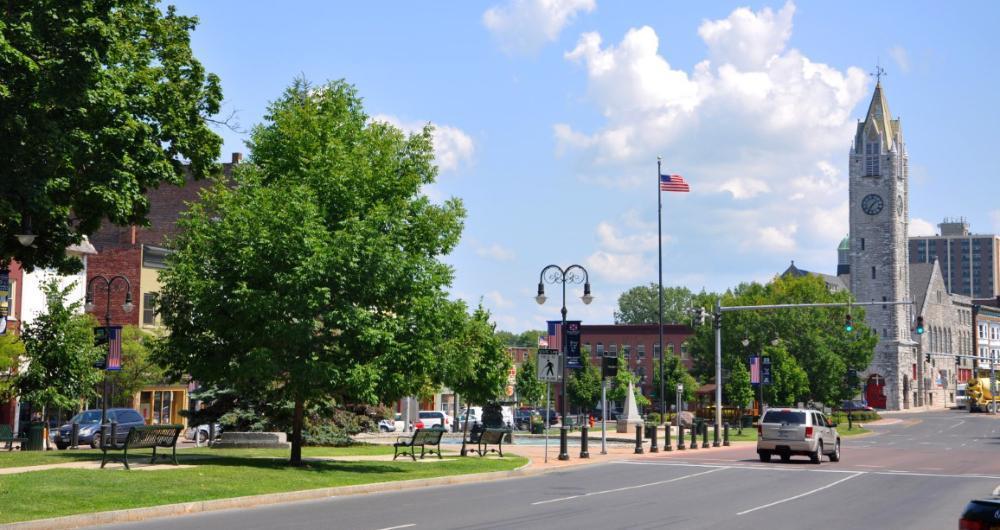
20. Watertown
Planning to get to know the Thousand Islands region near the Canadian border? This area feels like one of the most unspoiled stretches of upstate New York I’ve explored.
Why? First off, for history lovers, Watertown has some unusual treasures - I enjoyed learning about its past at the Jefferson County Historical Society Museum, tucked inside an old mansion that gave me a unique glimpse into the region’s story.
- Location: Northern New York State, near Lake Ontario and the Thousand Islands region
- Map & Directions
- Elevation: 512 feet (156 meters) above sea level.
What I loved best:
One of my favorite experiences was heading to Thompson Park, designed by Frederick Law Olmsted (the same landscape genius behind Central Park) where rolling hills, scenic trails, and the small zoo made it such a joyful spot for a family weekend.
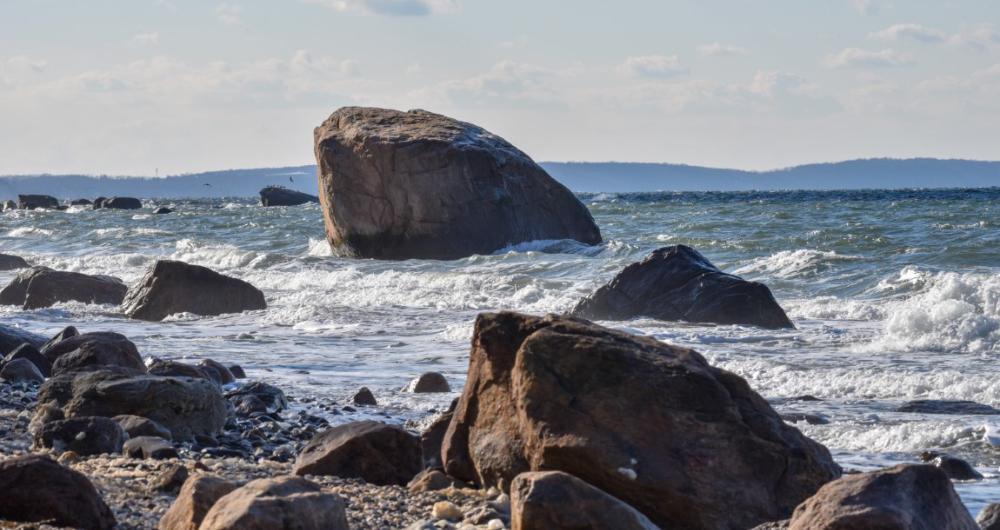
21. Cutchogue on the North Fork of Long Island
Ready for a history-rich, wine-country getaway? I loved that this Suffolk County weekend getaway is surrounded by vineyards, farms, and coastline, and it quickly became one of my favorite spots for a dreamy, laid-back getaway.
From our last stop in Greenport, NY, it was less than 20 minutes to reach Cutchogue, a hamlet of around 3,300 people. I learned that some of the absolute best vineyards and tasting rooms in the state are located right here.
- Location: Eastern Long Island, in the heart of the North Fork wine region, between Mattituck and Southold
- Map & Directions
- Elevation: 36 feet (11 meters) above sea level.
What I loved best:
We loved visiting Suhru & Lieb Vineyards - they have a lovely tasting room, surrounded by 54 acres of vines, including a furnished front patio.
For me, Cutchogue is one of the best places to visit in New York State because it's peaceful, scenic, and hope you will love it too!
For me, the beaches nearby were a highlight as I walked along the calm shores of Peconic Bay and felt like I had the coast to myself, so peaceful, so romantic, and yet perfect for a family picnic too.
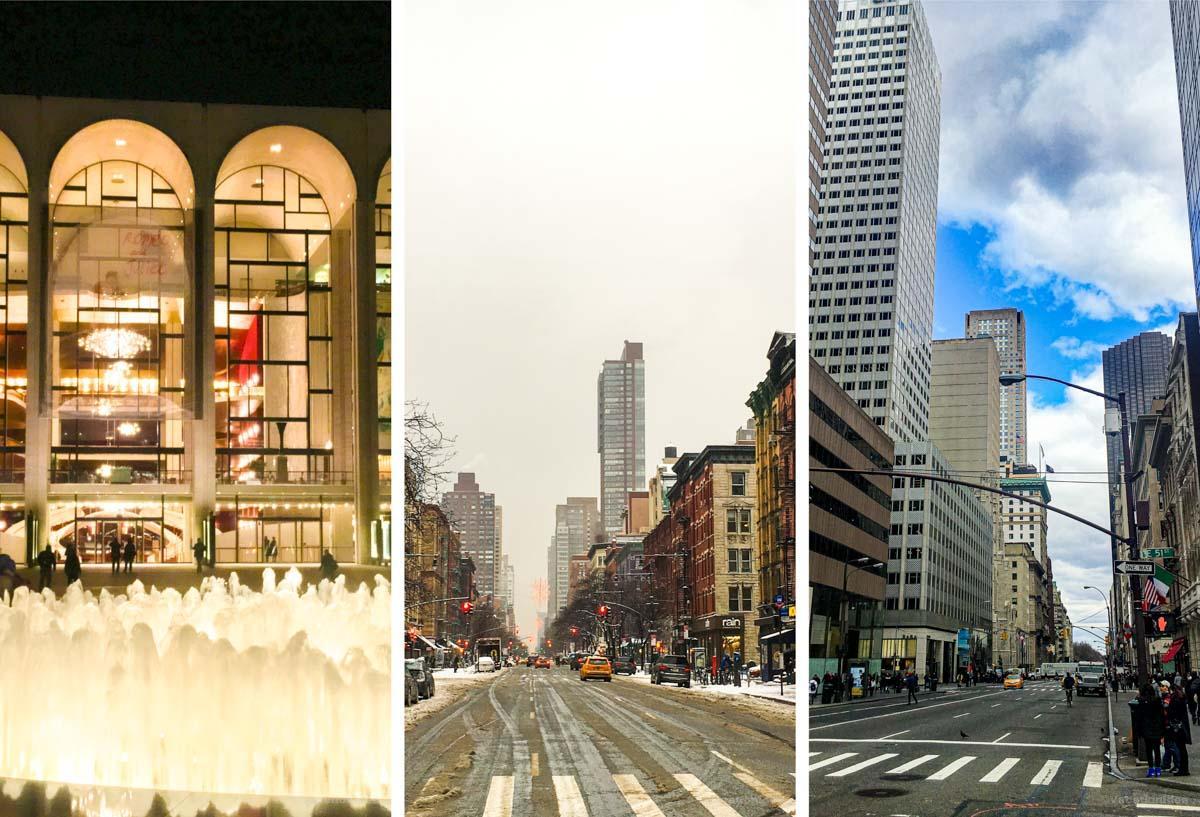
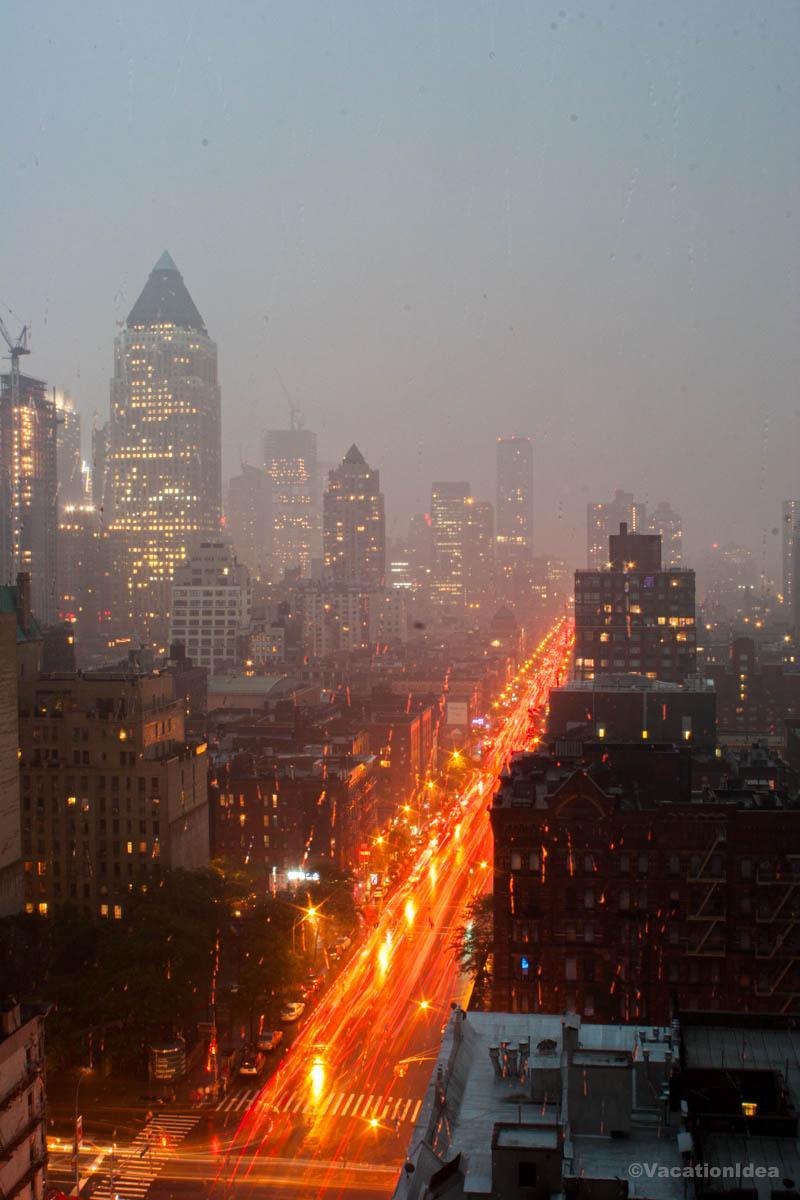
Booking Checklist
1. Book Your Flight - I use Expedia because I like their mobile app with my itinerary. They've helped me re-book flights on many occasions. Once you reach their Gold tier, support is especially good.
2. Book Your Hotel - I use Booking.com or Expedia, depending on my destination.
3. Book Your Rental Car - I use Expedia.
4. Book your tours on Viator or Get Your Guide.
5. If you are planning to visit more than three national parks in the next 12 months, buy the America the Beautiful Pass.
